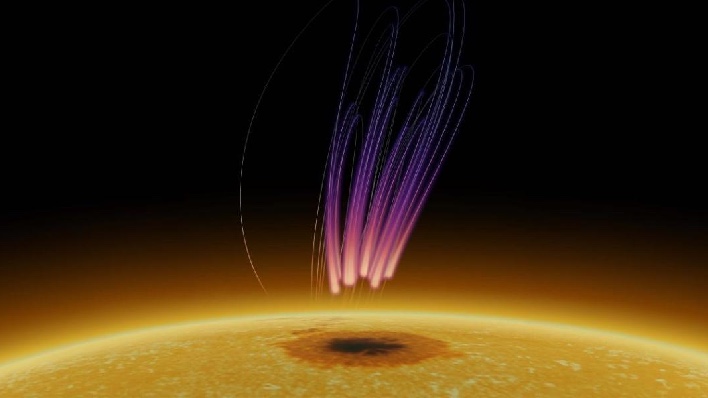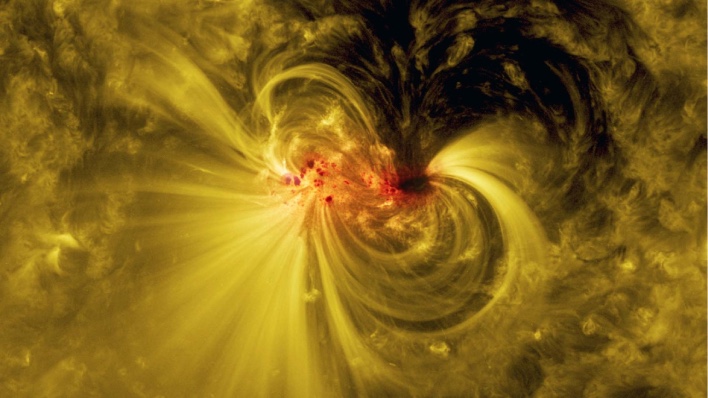Scientists Discover A Stunning Extraordinary Aurora Emission On The Sun

Lead author and NJIT-CSTR scientist Sijie Yu believes the discovery offers a new perspective into the origin of intense solar radio bursts and could open new avenues for understanding similar phenomena in distant stars with large sunspots. Yu added that the team detected a "peculiar type of long-lasting polarized radio bursts emanating from a sunspot, persisting for over a week," unlike most that usually only last minutes or hours.
According to the National Weather Service, sunspots are areas where the magnetic field is approximately 2,500 times stronger than Earth's and much higher than anywhere else on the Sun. Due to the strong magnetic field, magnetic pressure increases while the surrounding atmospheric pressure lessens. Because of this, the temperature relative to its surroundings decreases due to the concentrated magnetic field inhibiting the flow of hot, new gas from the Sun's interior to the surface.

The gorgeous aurora that is often visible across the sky or Earth's polar regions happens as solar activities disturb Earth's magnetosphere, which in turn causes the precipitation of charged particles to the Earth's polar region where the magnetic field converges and interacts with oxygen and nitrogen atoms high above in the atmosphere. The electrons accelerating toward the north and south poles can produce intense radio emissions at frequencies around a few hundred kHz. However, the detected sunspot aurora emissions occur at frequencies ranging from hundreds of thousands of kHz to nearly 1 million kHz, which is thought to be a direct result of the sunspot's magnetic field being a thousand times stronger than Earth's.
The team believes the new findings could have implications for astrophysicists to reconsider current models of stellar magnetic activity. Surajit Mondal, an NJIT solar researcher, remarked, "We're beginning to piece together the puzzle of how energetic particles and magnetic fields interact in a system with the presence of long-lasting starspots, not just our own Sun but also on stars far beyond our solar system."
A new research paper covering the aurora-like radio emission above a sunspot can be viewed in the journal Nature Astronomy.

